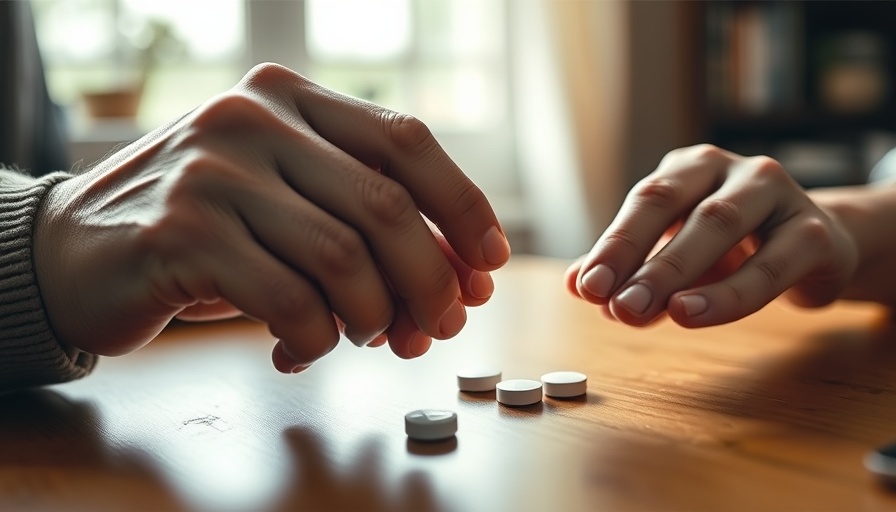
Why the Revised Beers Criteria Matters for Older Adults
On August 18, the American Geriatrics Society (AGS) unveiled an important update to the 2023 AGS Beers Criteria, providing safer alternatives to commonly prescribed medications for older adults. This widely adopted guideline helps healthcare professionals identify potentially harmful medications and advocate for safer treatment plans. With an alarming rise in polypharmacy—defined as the concurrent use of multiple medications—this updated guidance is essential to minimize avoidable adverse drug reactions among the elderly.
The Dangers of Polypharmacy
Polypharmacy is a growing concern, particularly for adults aged 65 and older who often manage multiple chronic conditions like heart disease, diabetes, and depression. The reality is staggering: a CDC report indicates that nearly 84% of U.S. adults in their 60s and 70s used at least one prescription medication within the last month, and approximately one-third were prescribed five or more drugs. Polypharmacy not only increases the risk of unpleasant side effects—such as sedation and confusion—but can also complicate treatment protocols, leading to costly hospitalizations.
Exploring Safer Options: Non-Pharmacological Alternatives
The revised Beers Criteria emphasizes the need for healthcare providers to explore non-drug alternatives as the first line of management. For instance, physical therapy, meditation, nutrition guidance, and wellness coaching can significantly enhance the quality of care for older adults. Simple lifestyle changes, such as increasing physical activity through yoga or meditation, can greatly improve both physical and mental health. These approaches not only reduce reliance on medications but also foster a holistic health perspective that is essential for aging populations.
Clinical Implications of the Updated Guidelines
Healthcare professionals are encouraged to prioritize non-pharmacological therapies and utilize the Beers Criteria as a framework for reducing inappropriate medications. The link between drug side effects and misdiagnosis is clear: cognitive issues may stem from medications rather than true decline. Clinicians must recognize the importance of de-prescribing when necessary and actively engage patients in discussions about their treatments. Past studies have shown that patient education can empower older adults to take control of their health.
Encouraging Conversations About Medication Management
The updated guidelines serve as a critical reminder for both caregivers and patients to discuss medication management comprehensively. Regular evaluations of drug regimens can help identify unnecessary prescriptions and streamline patient care. Furthermore, using tools such as fitness trackers and meal planners can guide older adults in adopting healthier lifestyles, enhancing their vitality and enjoyment of life.
Embracing a Holistic Approach to Healthy Aging
Understanding the implications of the AGS Beers Criteria is crucial for older adults navigating their healthcare journey. Utilizing alternative therapies alongside medication can foster not only physical health but emotional well-being as well. Practices like mindfulness, yoga, nutritious eating, and even community-based programs can play pivotal roles in leading healthier lives. It is time to embrace a vision of aging that prioritizes not only safety but also overall quality of life.
As we consider the guidance laid out by health authorities like the AGS, we must take action. Educating ourselves and engaging with health professionals about the risks of polypharmacy and alternative treatments is vital for all older adults. Let’s take the first step toward a safer, healthier future by advocating for our health and the well-being of our loved ones.
 Add Row
Add Row  Add
Add 




Write A Comment